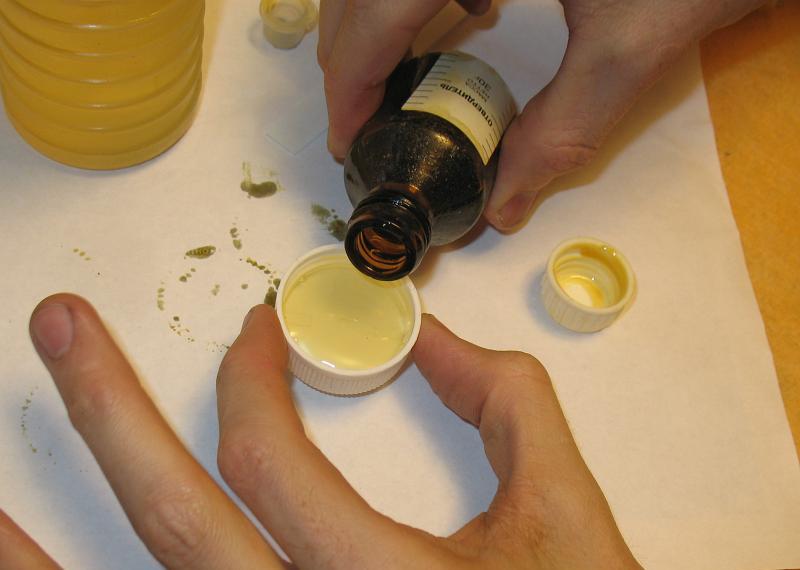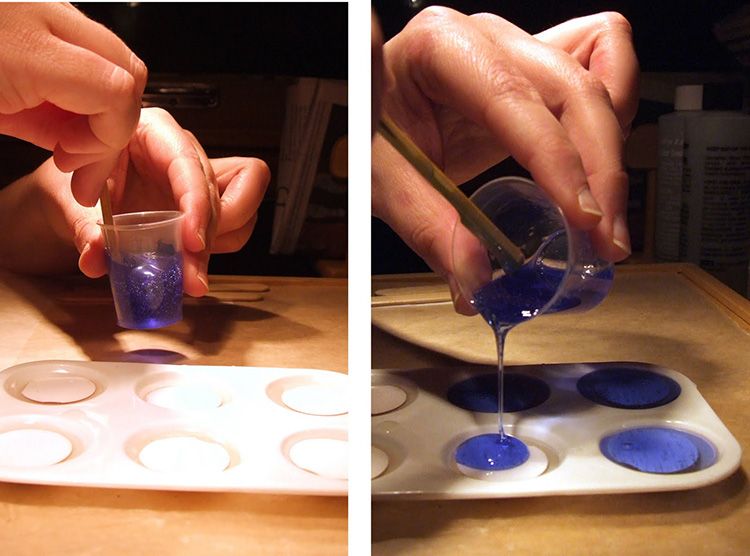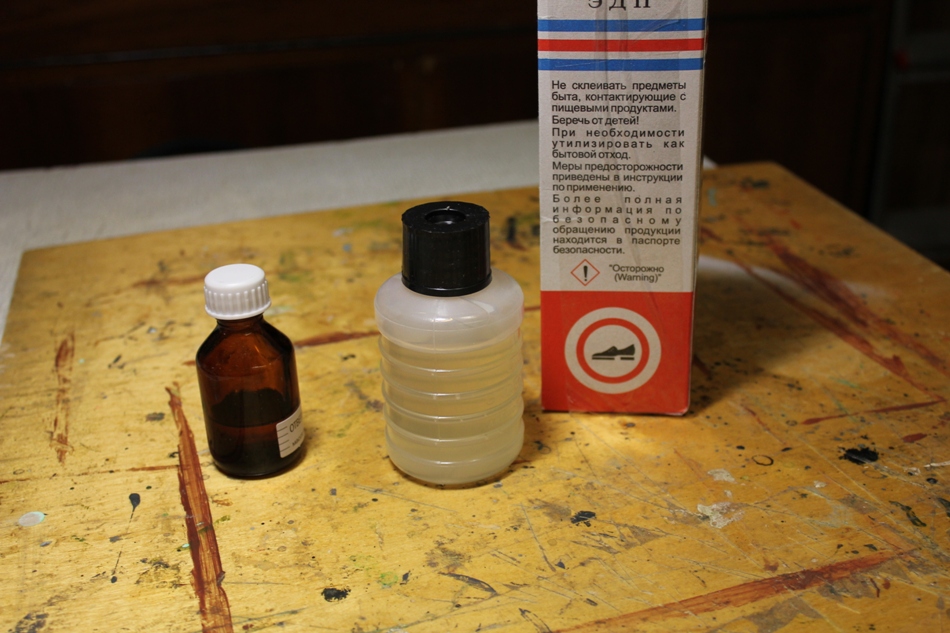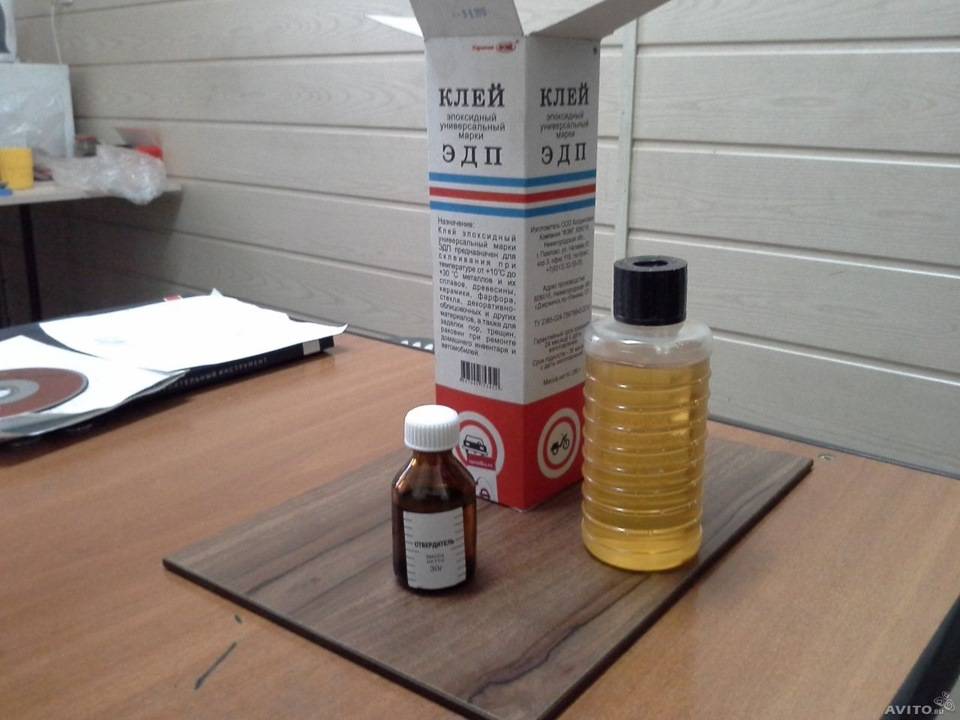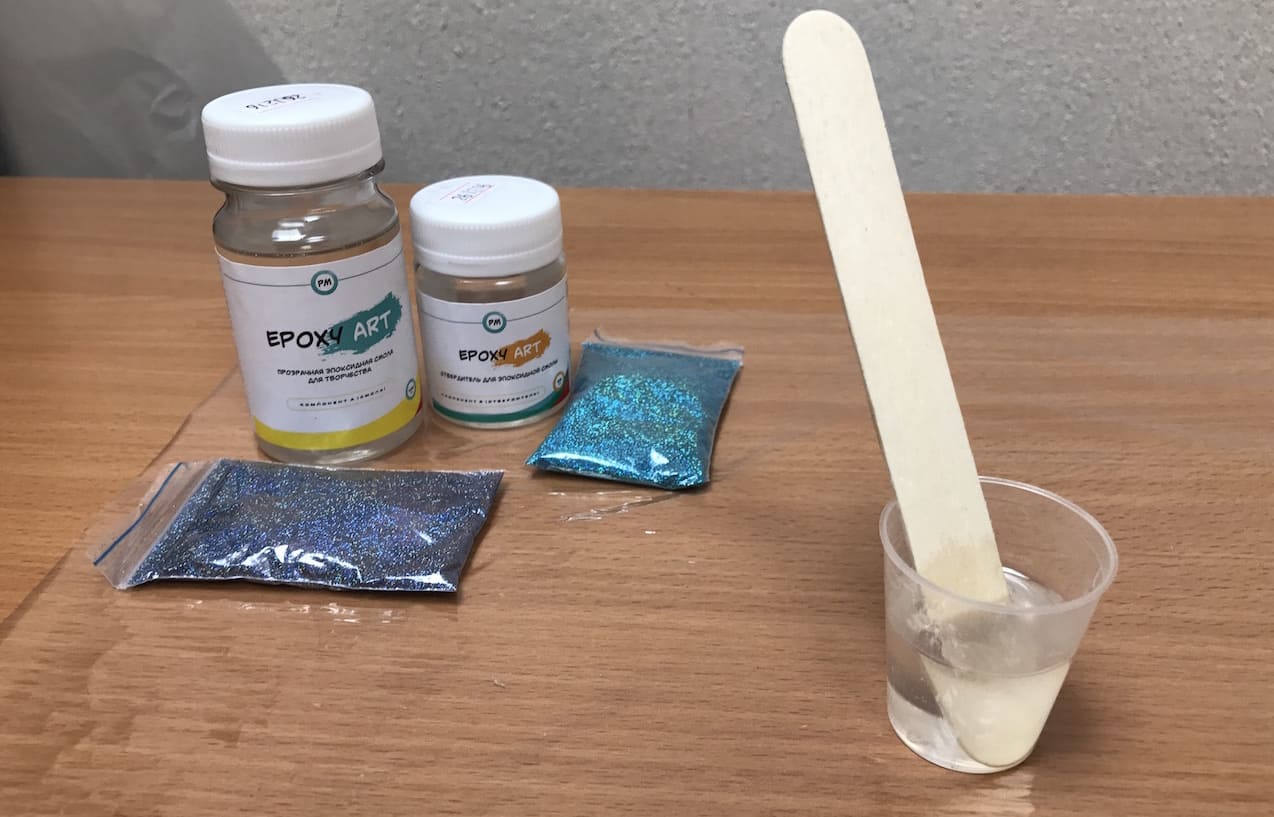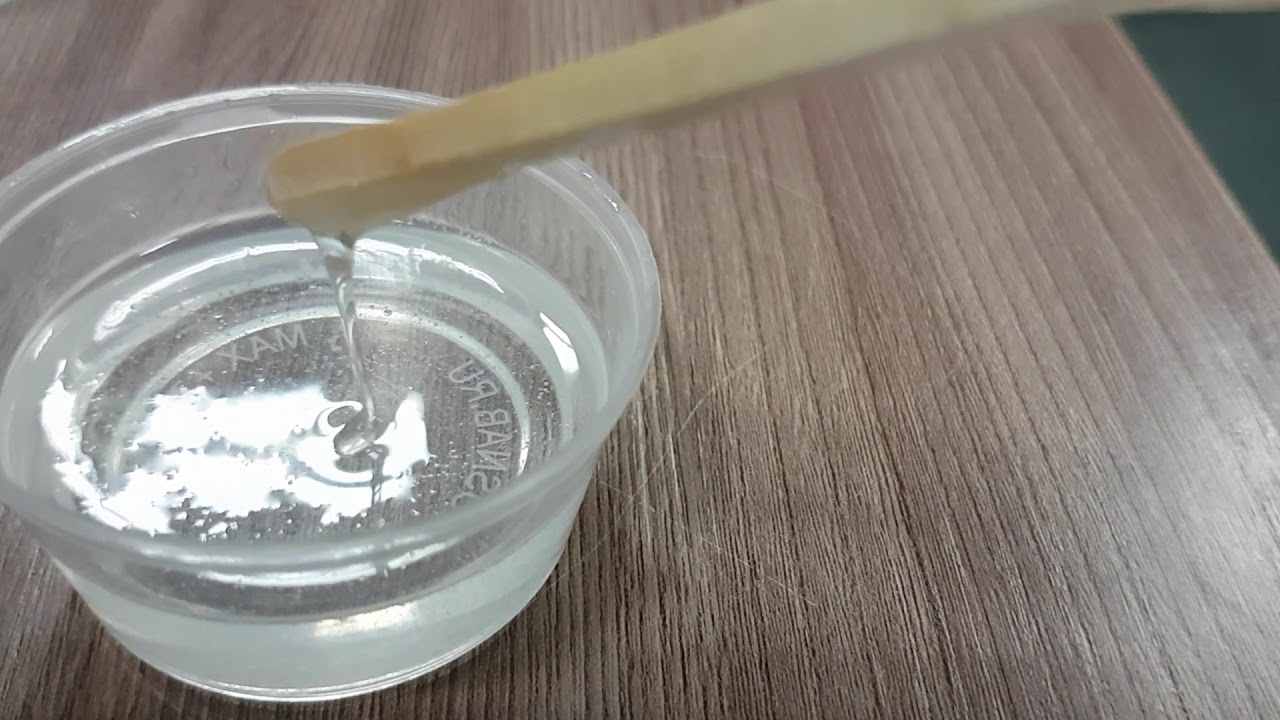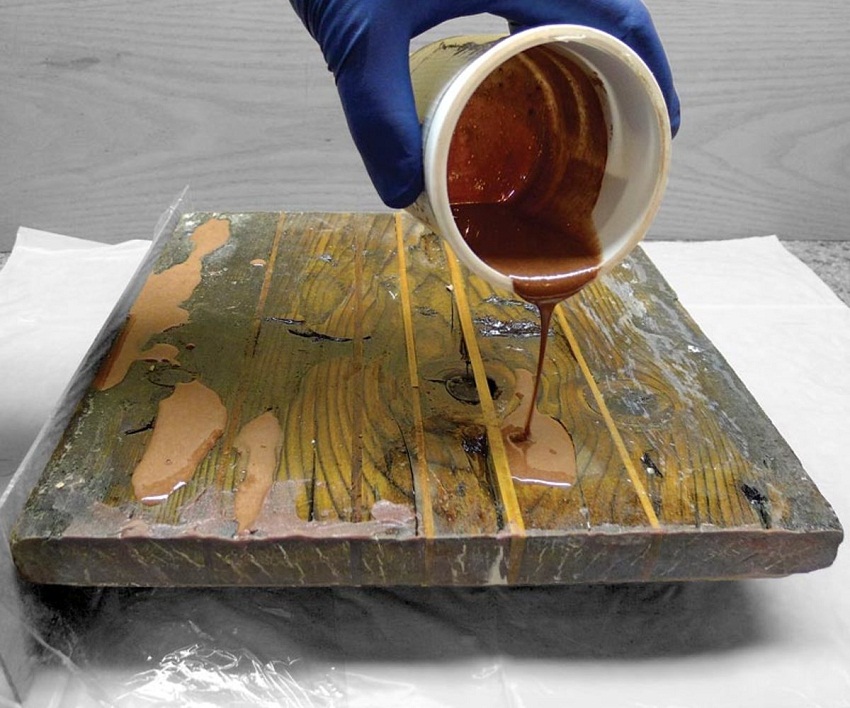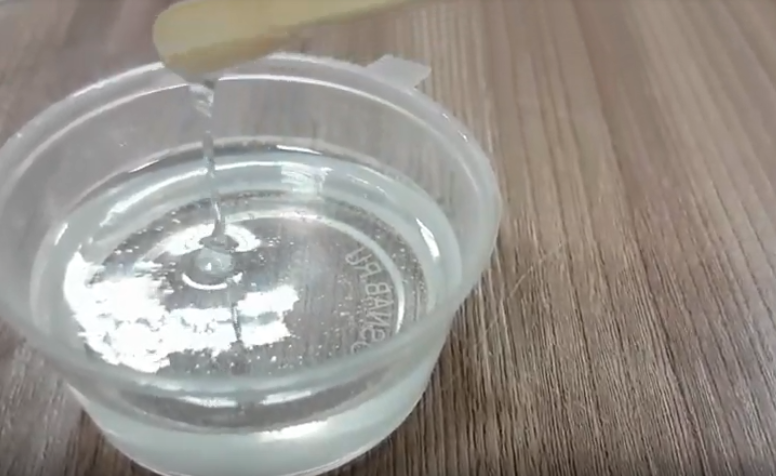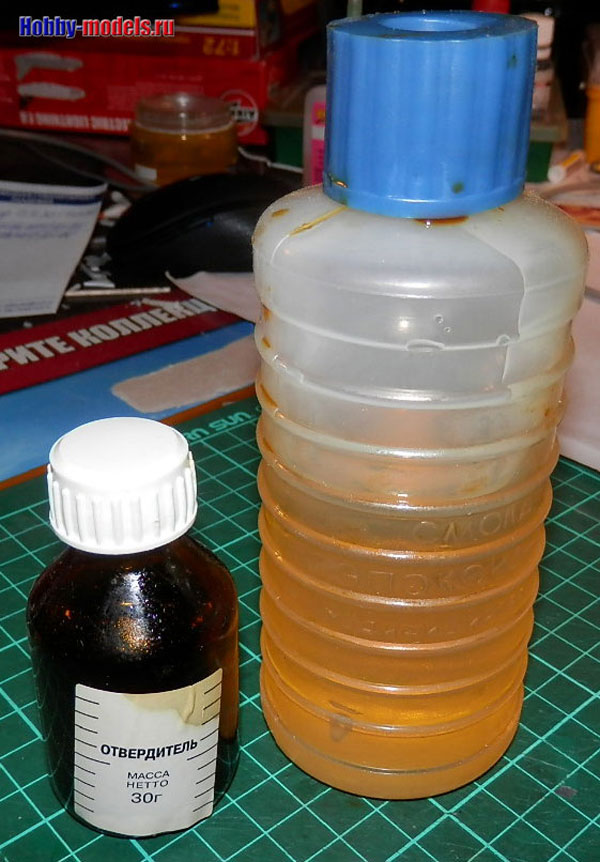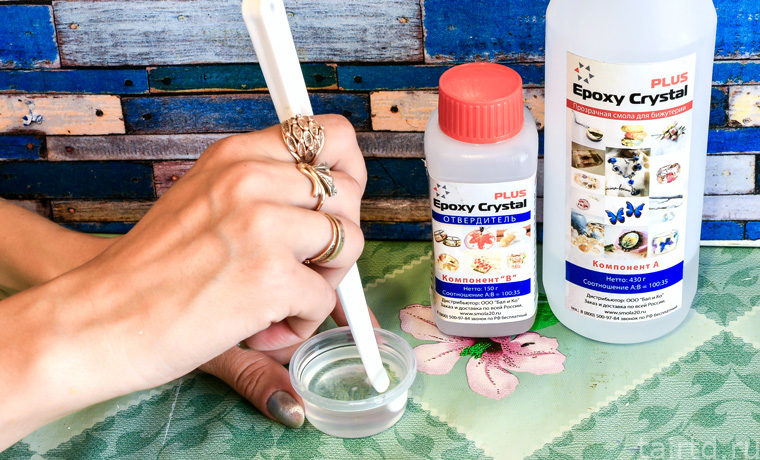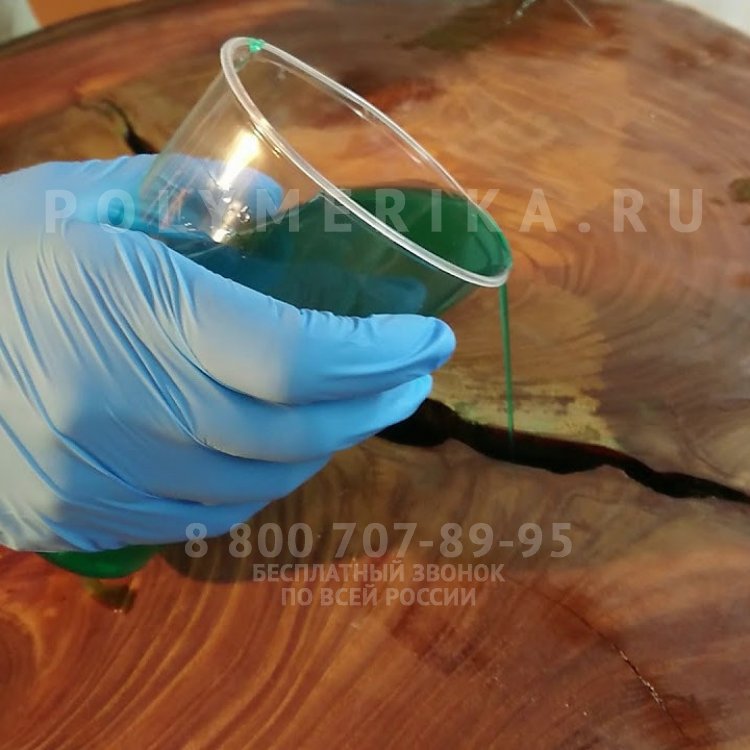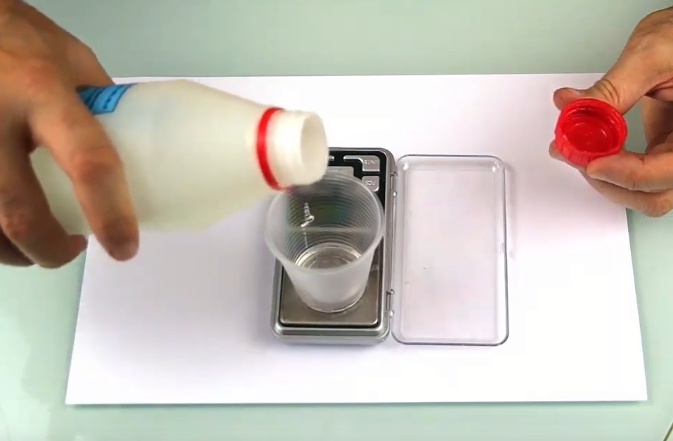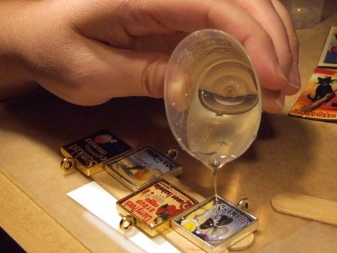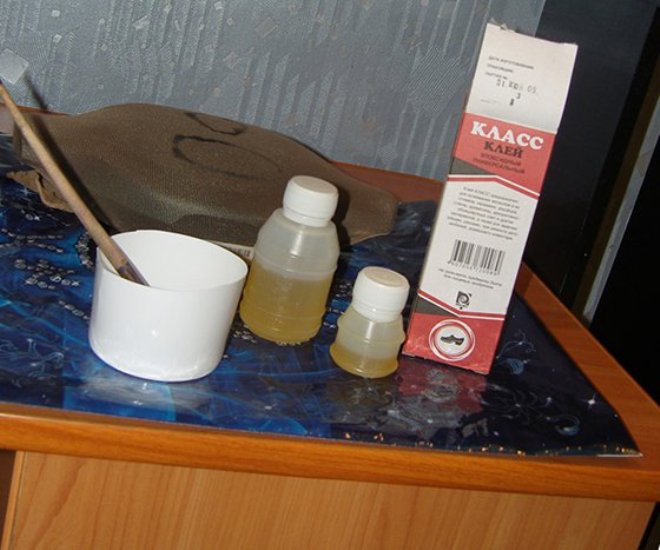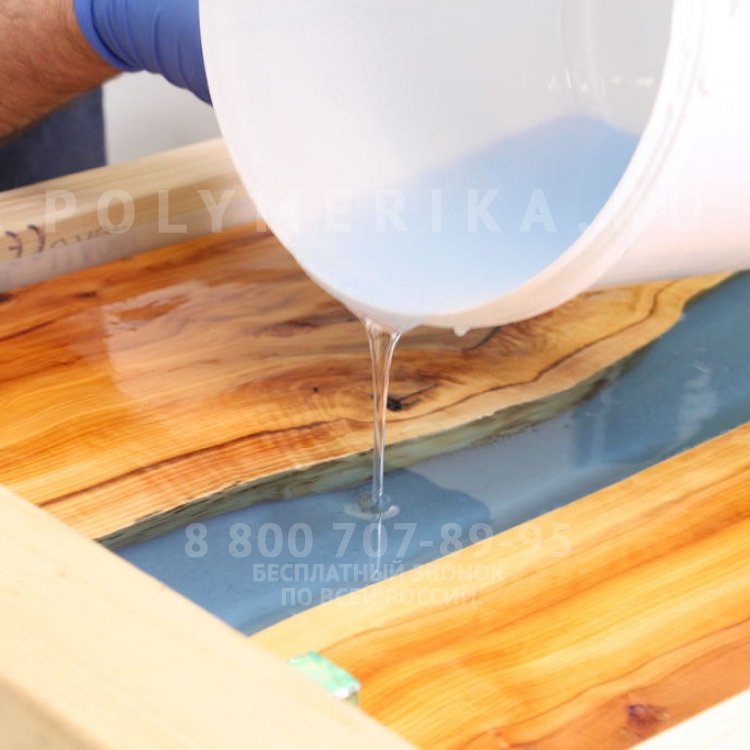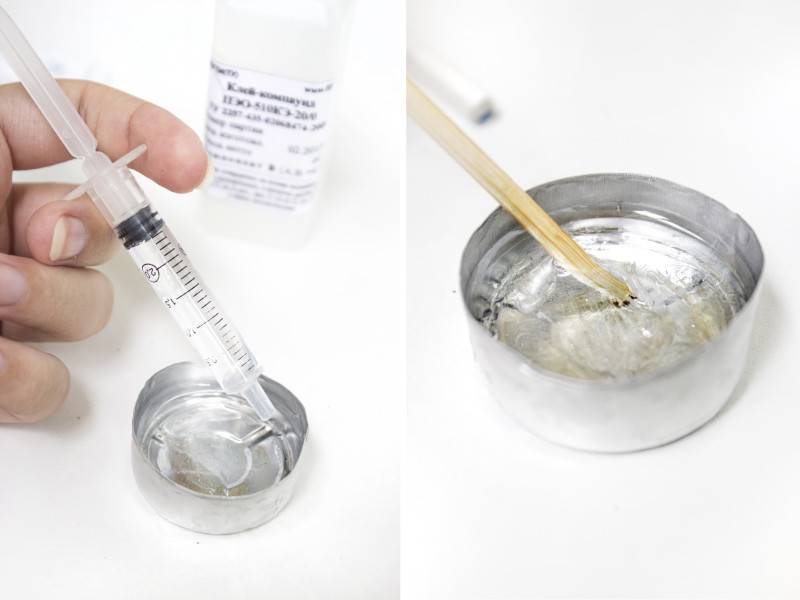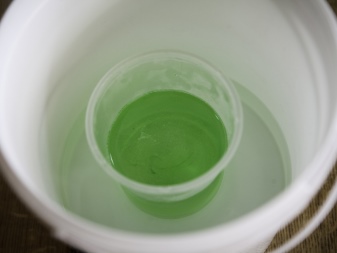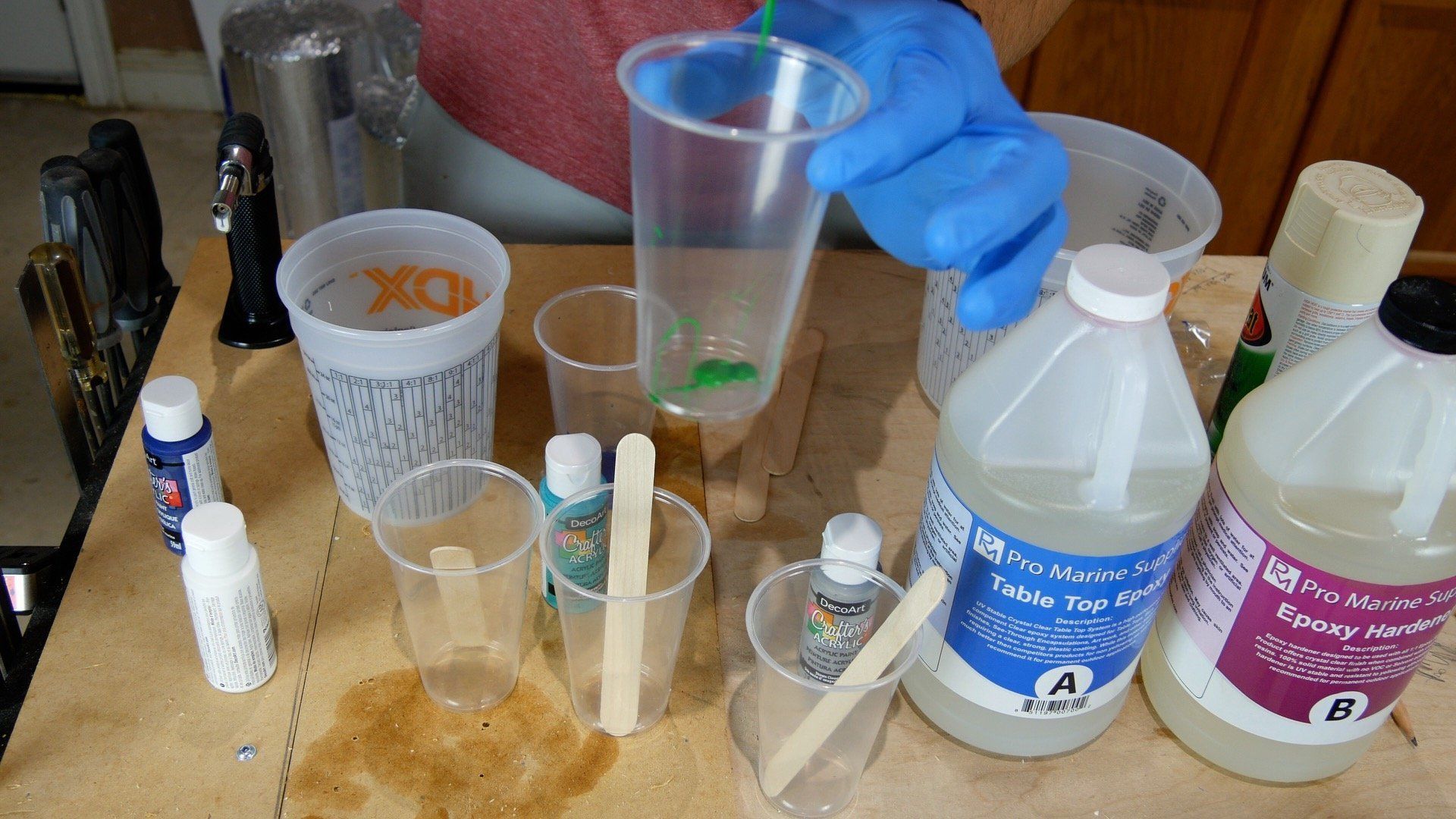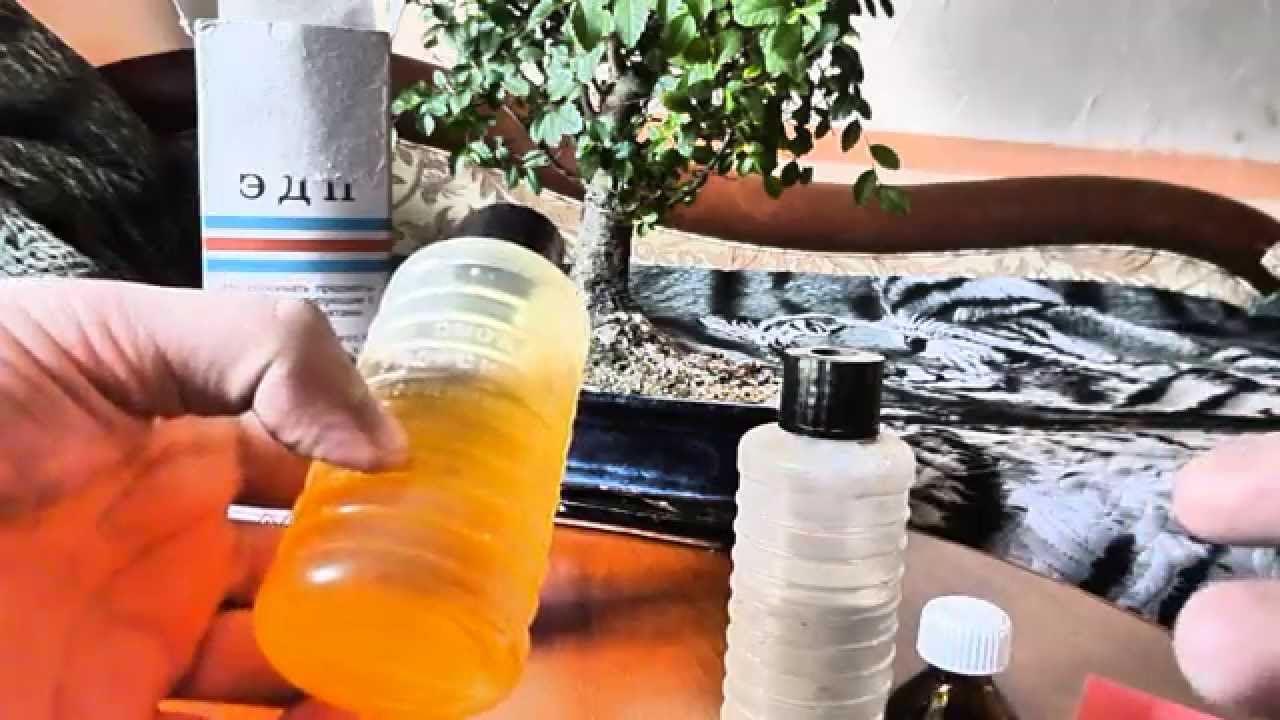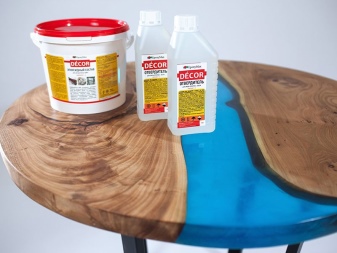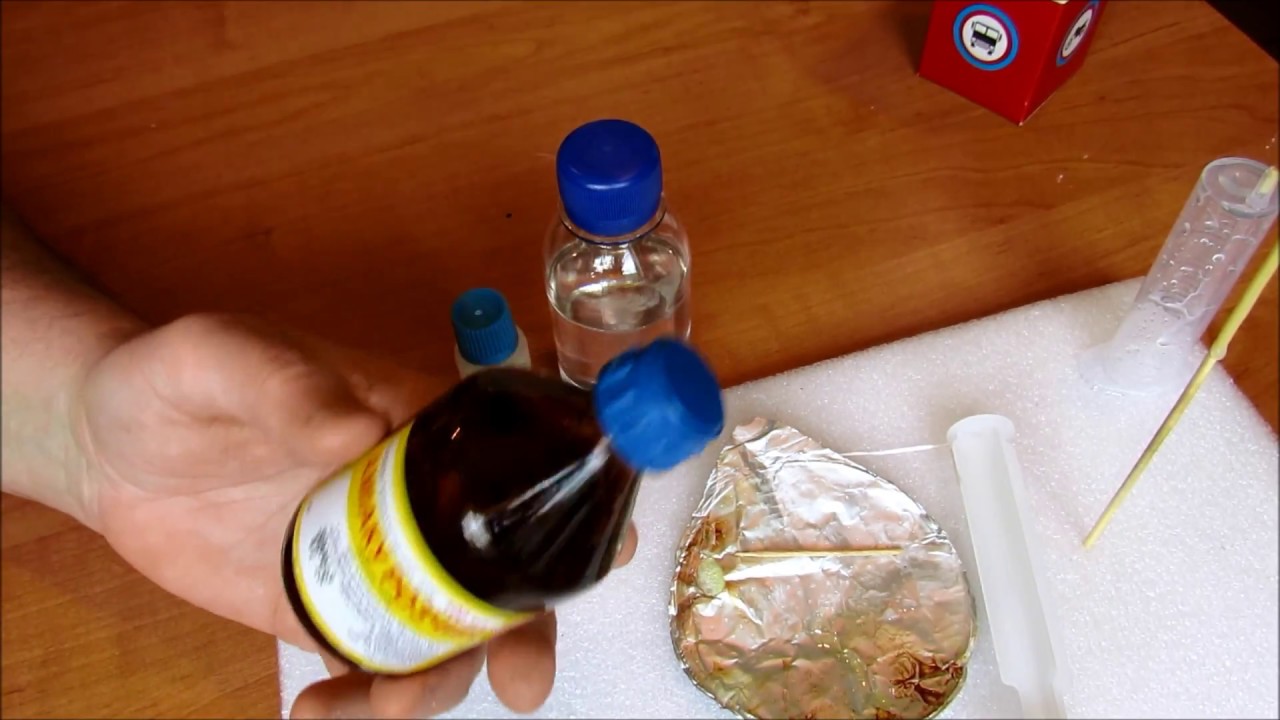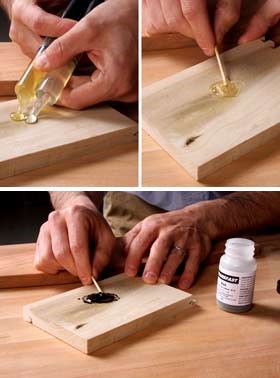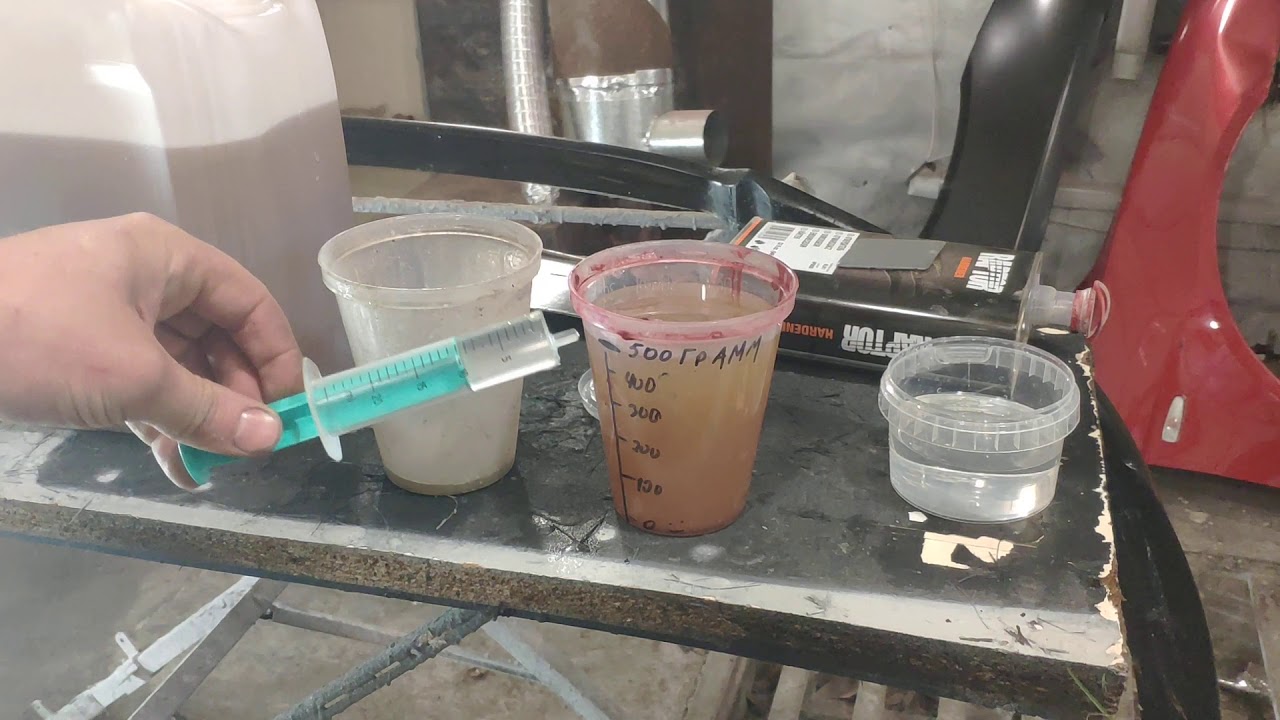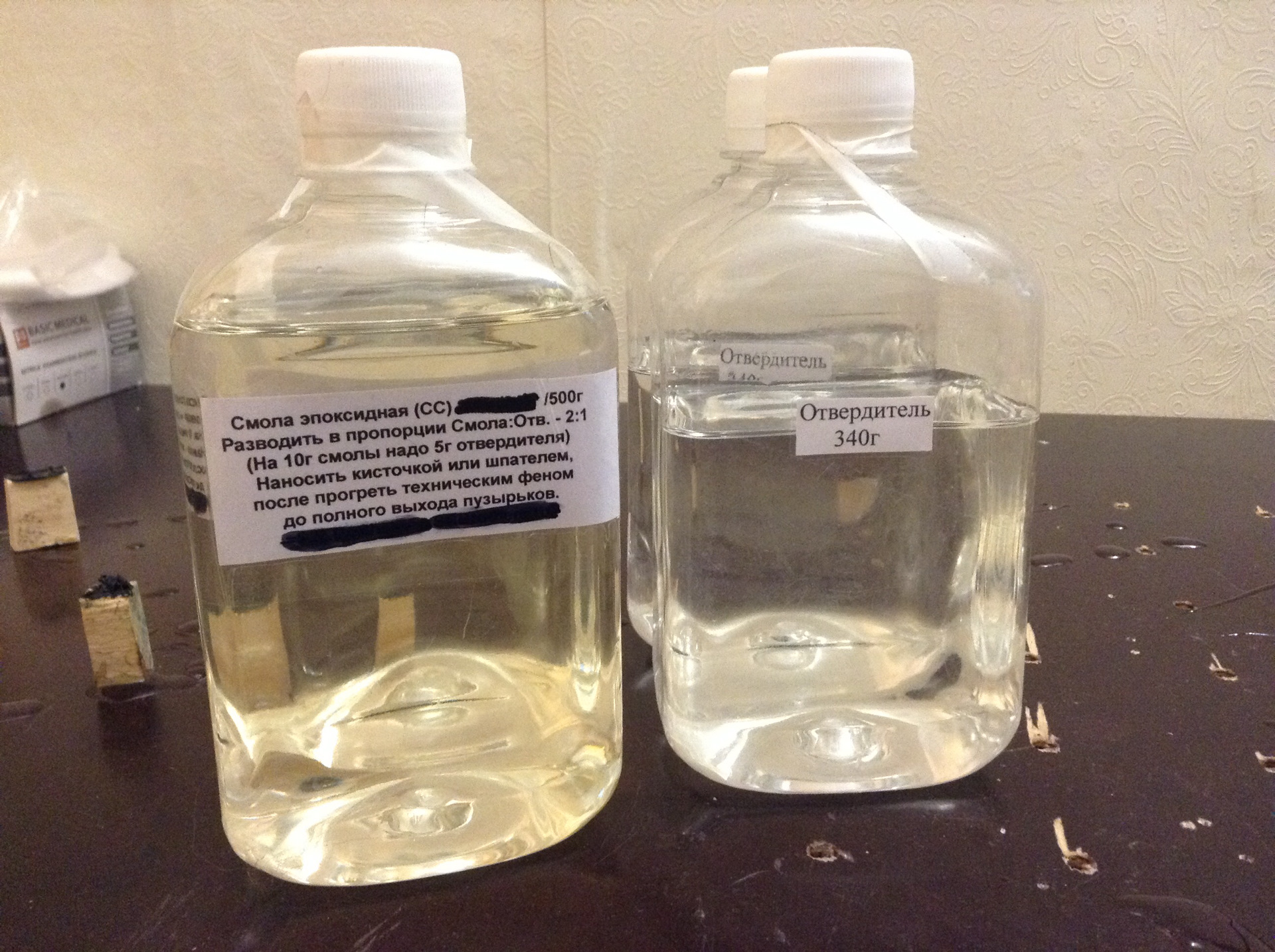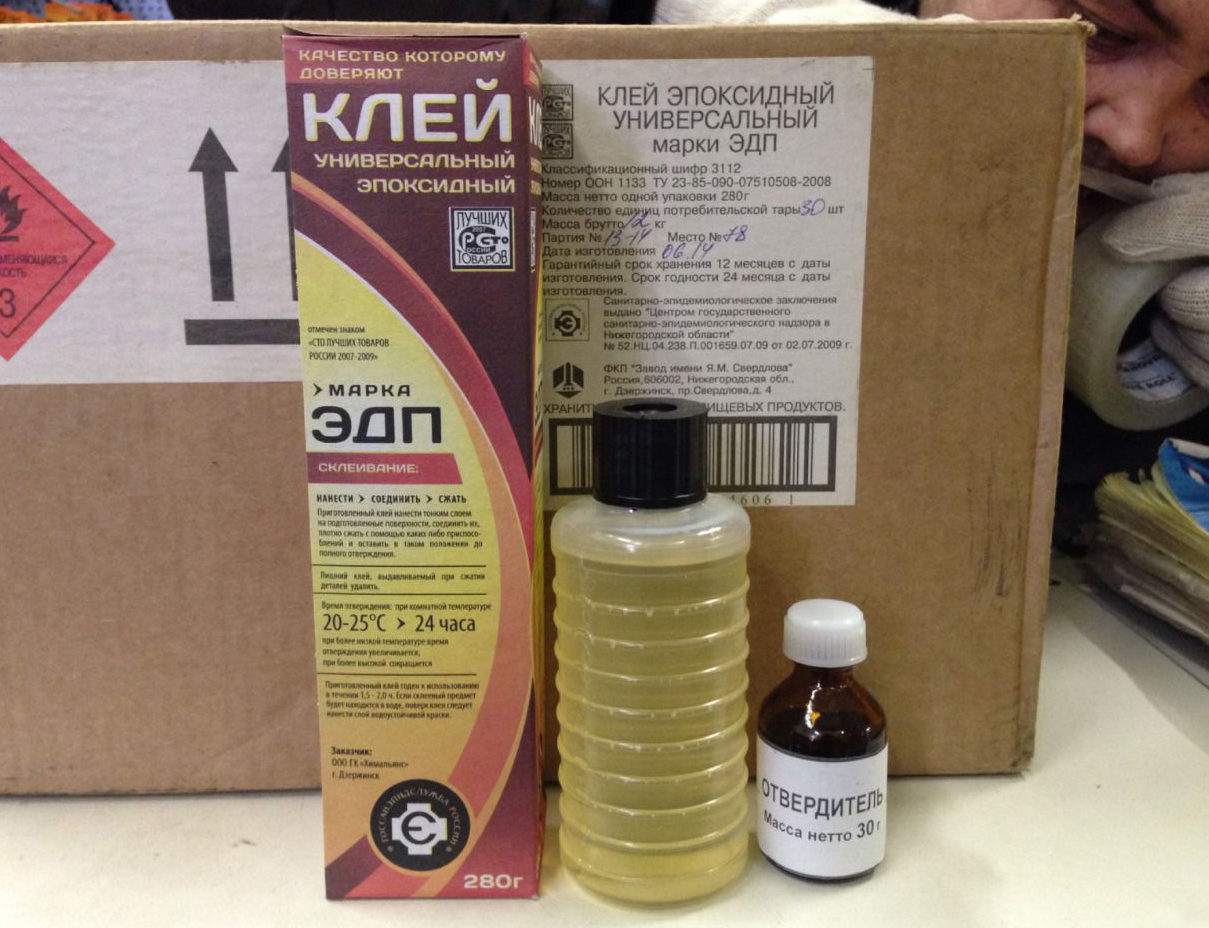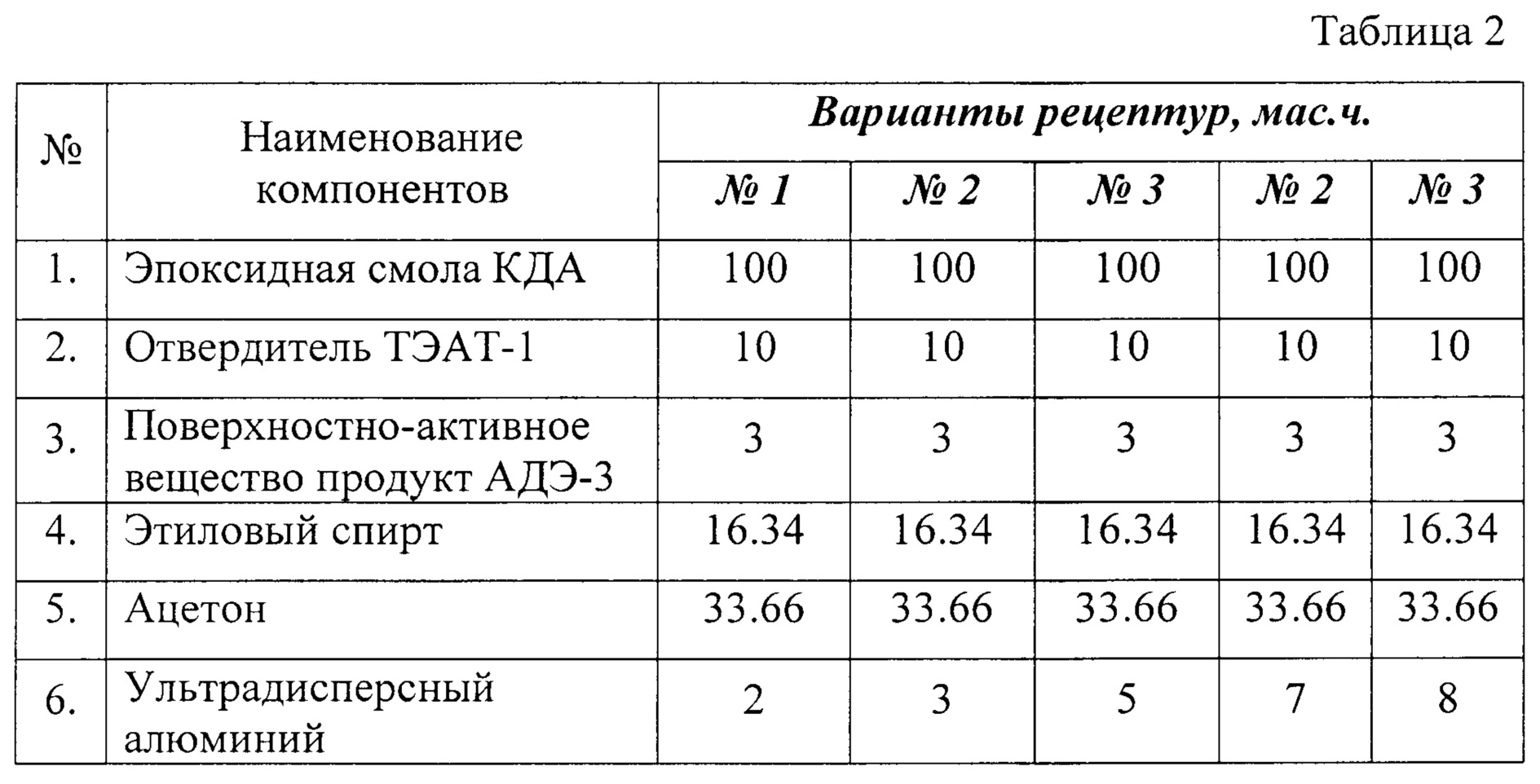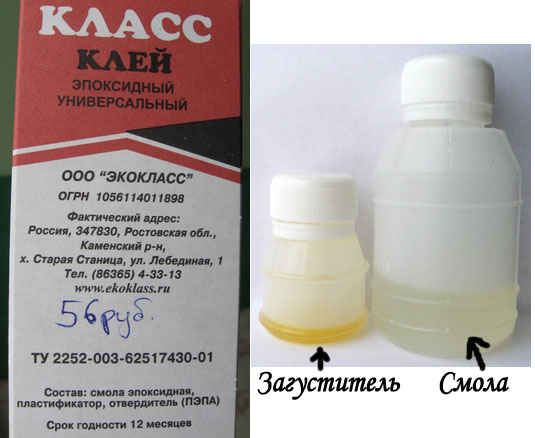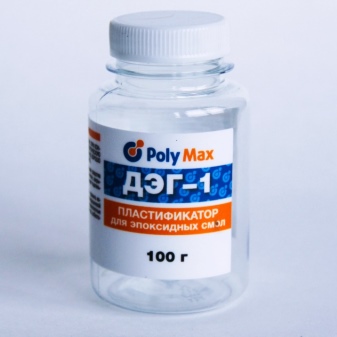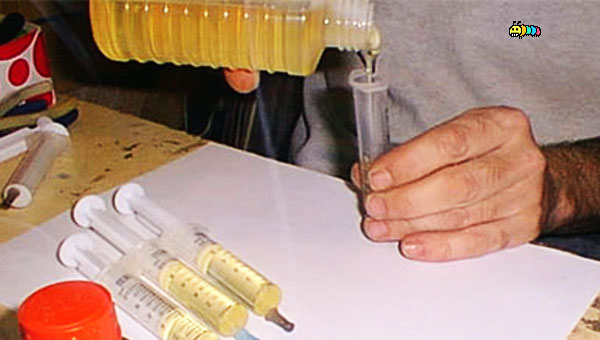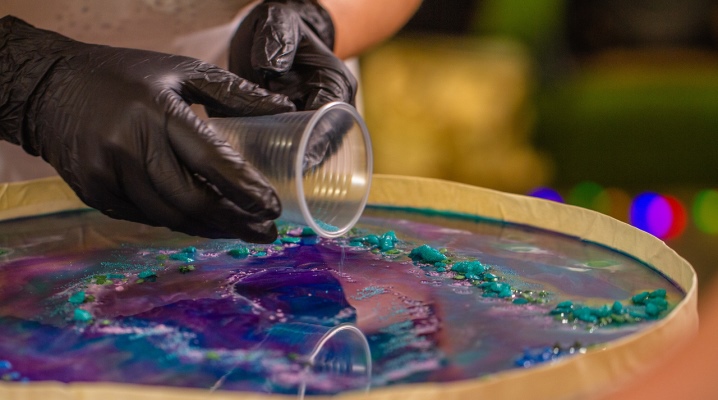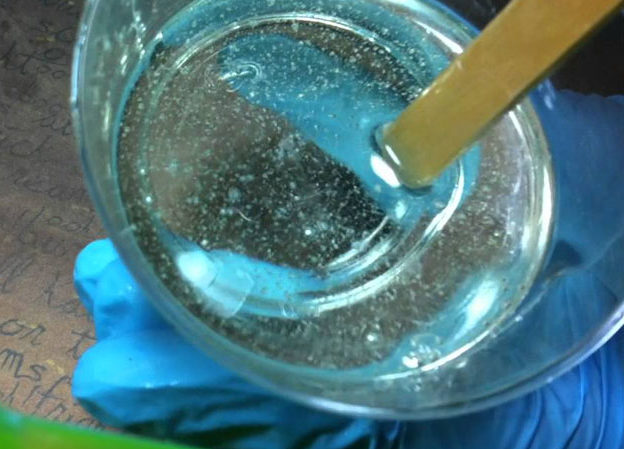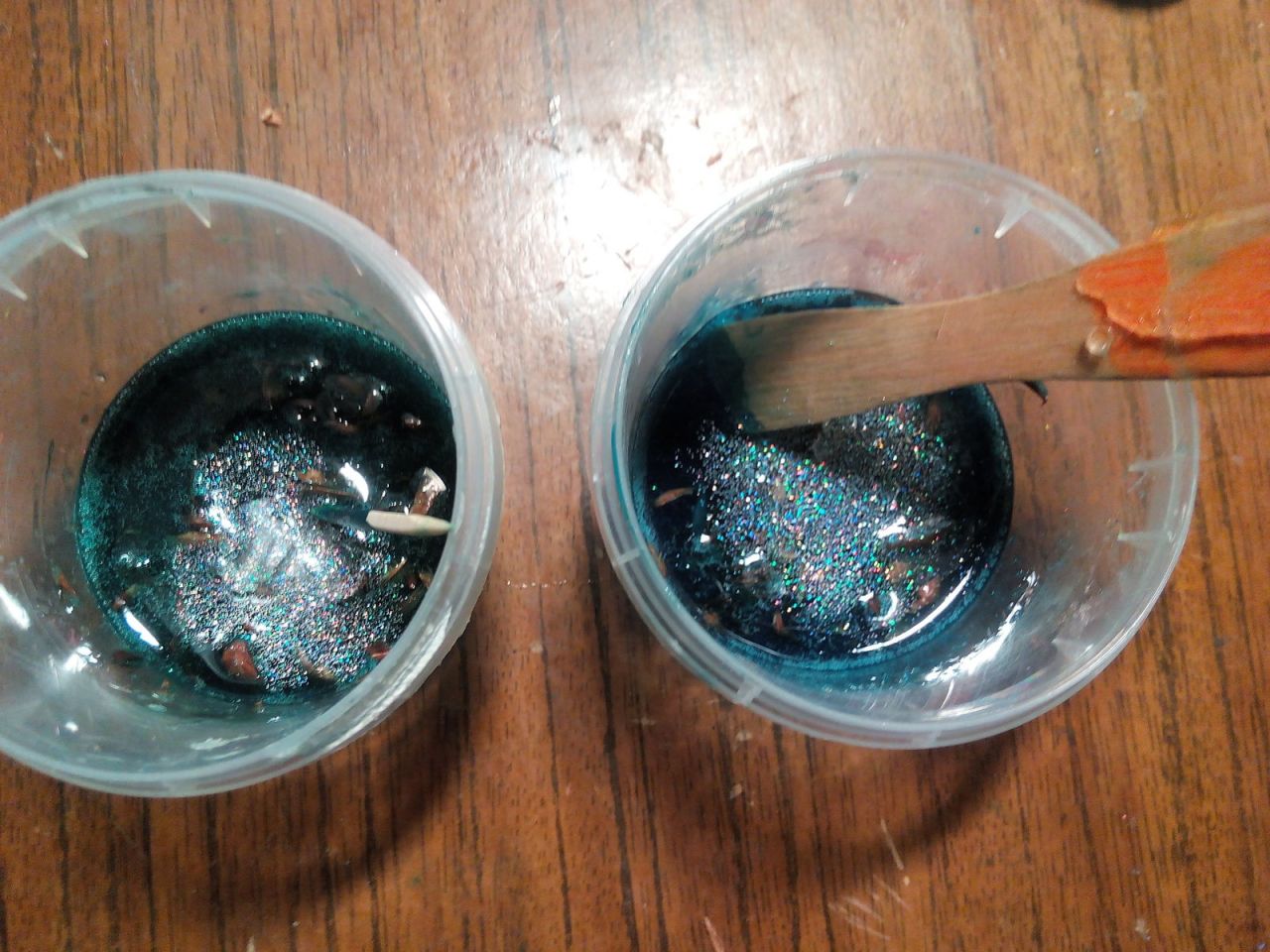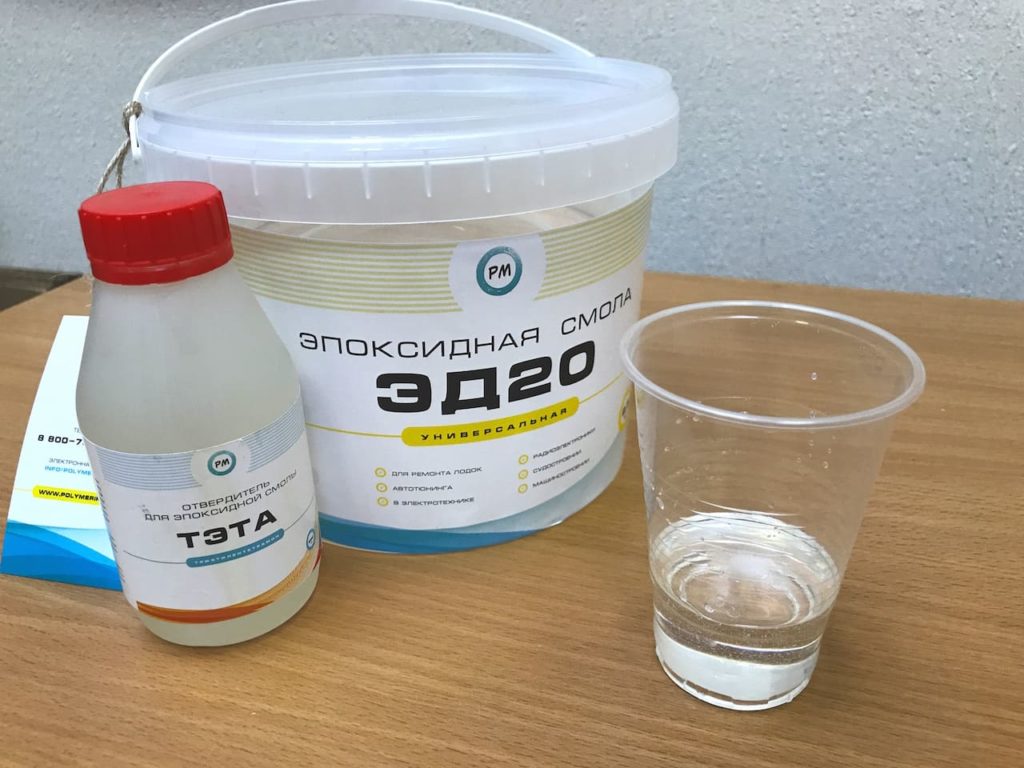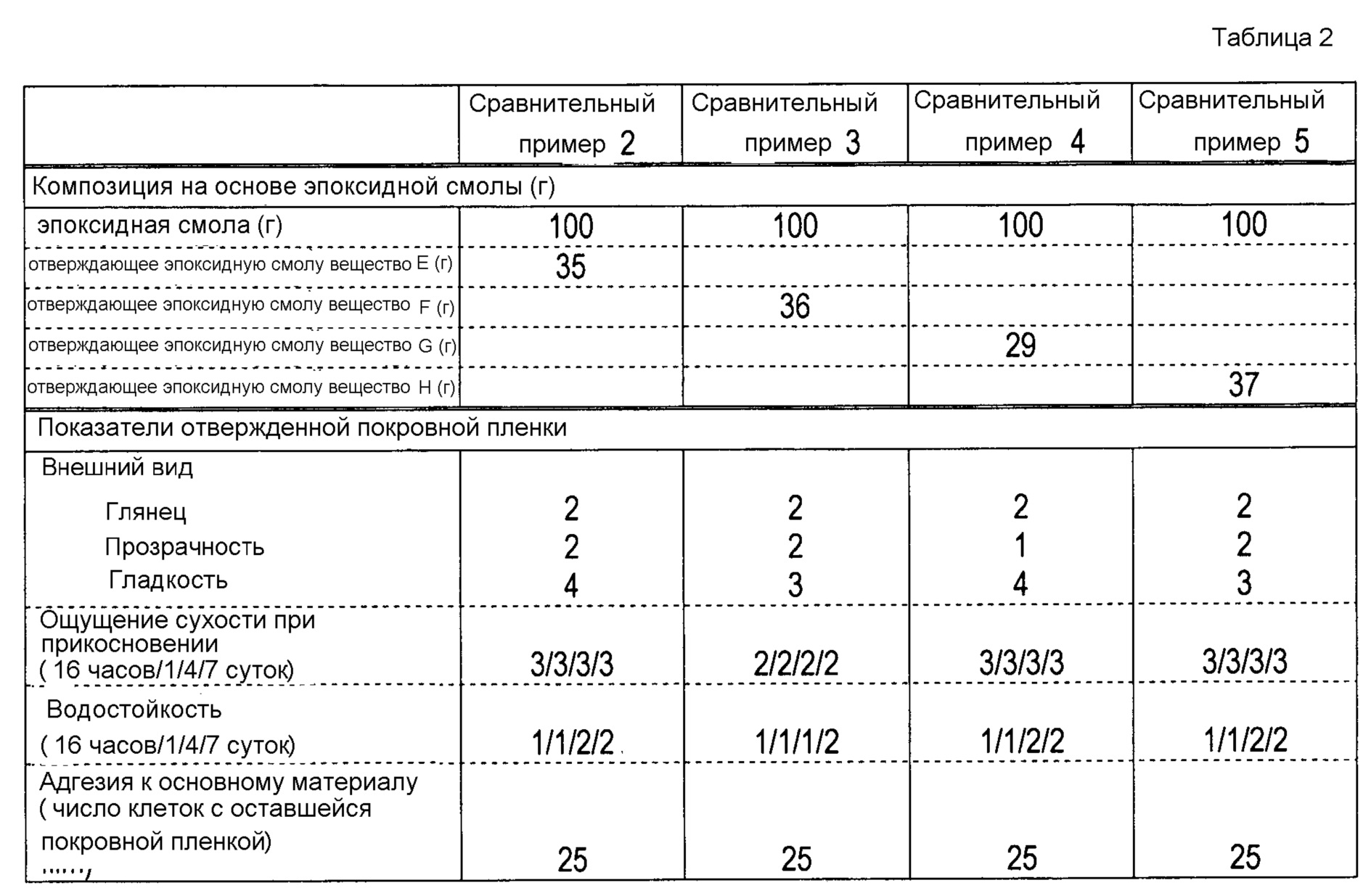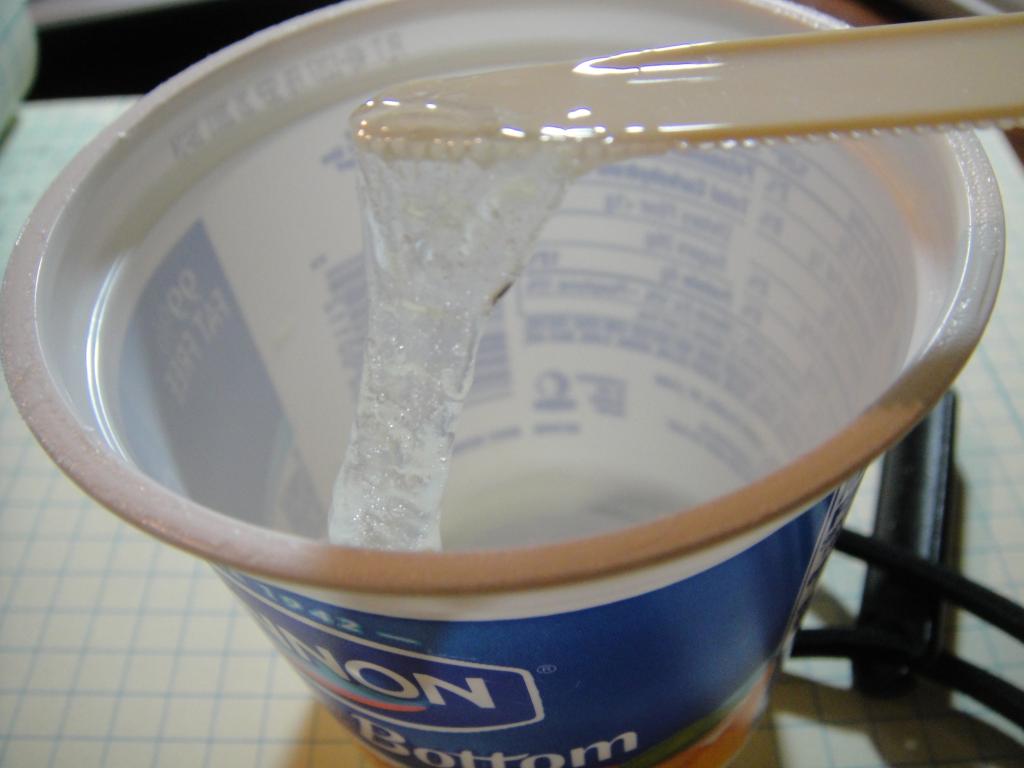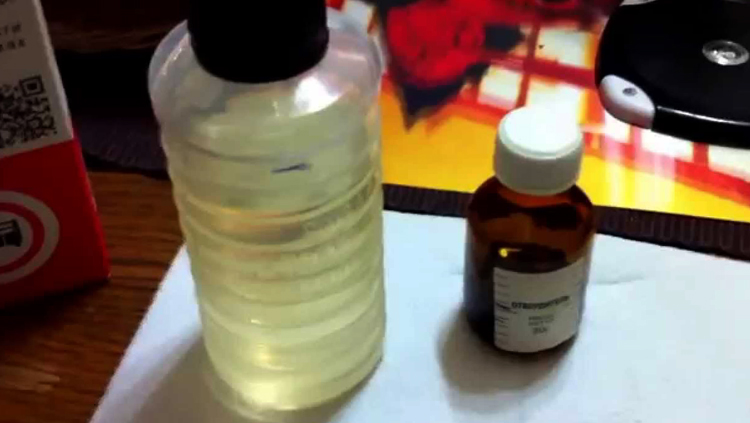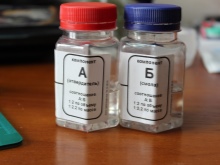Modern formulations
What can replace the described means? Modified hardeners are devoid of most of the disadvantages of traditional ones, but their price is much higher. The finished products will have higher strength properties, since the resin is polymerized more completely. Funds act as plasticizers - in some cases they are able to dilute and plasticize epoxy.
M-4
Hardener М 4 - modified type amine hardener, liquid with high viscosity, color - red-brown. M4 must be mixed with epoxy resin in the amount of 20 - 25% of the base material. The substance is capable of curing epoxy even at a temperature of + 2 ... + 5 degrees - this will not interfere with obtaining a product of increased strength.
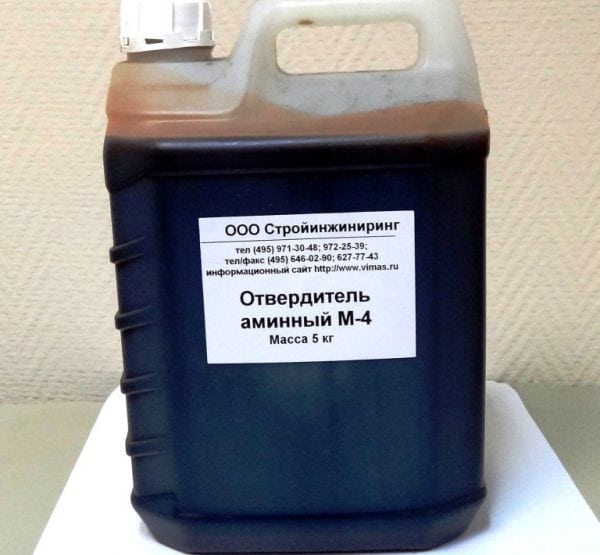
The fast curing agent is made on the basis of PEPA, improved in composition and properties. In addition to cold curing, if necessary, you can do hot curing with M4. The time of plasticization and gelatinization at room temperature will be 30-50 minutes, at lower temperatures it will increase.
Hardener 921
In the 921 series, several types of hardeners are sold - 921, 921 OP, 921 T. These are low-viscosity agents that allow you to obtain unique epoxy compositions with high resistance to damage and UV radiation.
Finished products will not fade from the sun, which not all hardeners can provide. Most often 921 is used for covering yachts and boats, as it can be applied in a layer up to 0.5 cm thick. The product is capable of hardening even thick layers of epoxy - up to 10 cm. For operation, it must be mixed in a volume of 45 - 55% of the resin mass.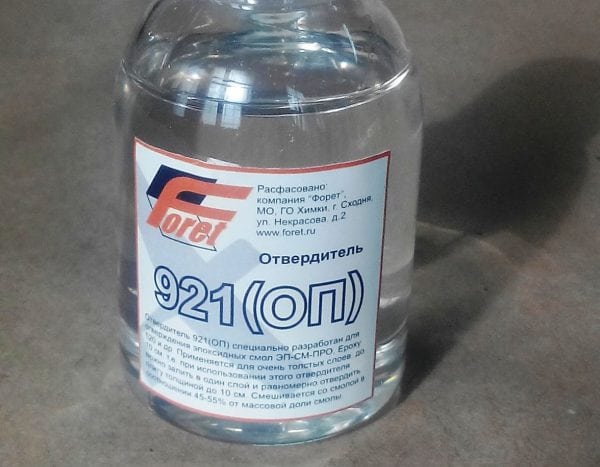
Hardener 620
UP-620 is a highly active agent that can cure resin even in high humidity conditions. It is added to epoxy in a small volume - only 15 - 18%, which is enough to obtain cold polymerisation fillings.
The product is used in the composition of compounds, binders for plastic, self-leveling floor. It is allowed to use a hardener at temperatures from +15 degrees. The resulting products are highly moisture resistant.
Etal
Amine hardener, non-toxic, no pungent odor. Designed for the polymerization of epoxies and compounds at any humidity, temperature, starting from -20 degrees. It is one of the most modern means, together with epoxy resin, it is used for the following purposes:
- anti-corrosion coating of metal - pipes, floors, roofs, containers;
- repair of metal, plastic, fiberglass products;
- sealing of electrical products;
- creation of fillings and impregnations;
- production of adhesives resistant to acids and alkalis.

AF-2
The product is based on aminophenol. It is a mixed product - the result of combining phenol, formaldehyde, amine. The hardener allows the resin to be cold polymerized under the most adverse conditions - high humidity and low temperature. It is added to the resin in an amount of 20 - 25%, at room temperature it cures in 24 hours.
What you need to know when working with epoxy
When studying the question of how to work with epoxy resin, keep in mind that this substance does not freeze by itself (like varnishes, which harden due to the evaporation of components). To harden the resin, a certain chemical reaction is required, which is catalyzed by a hardener.
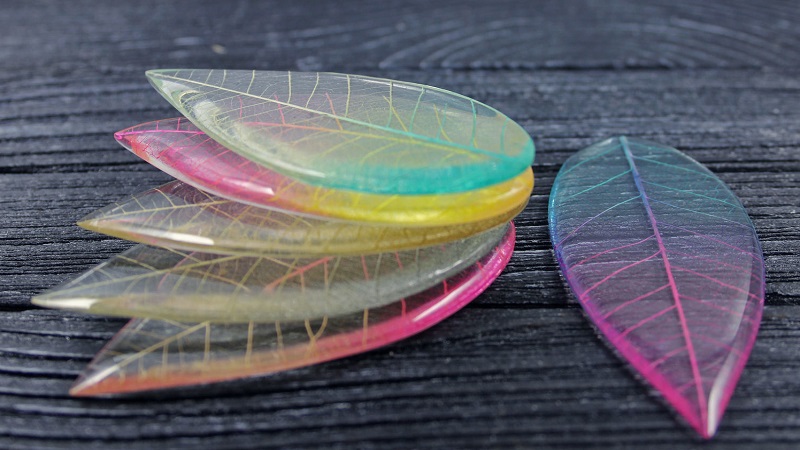 Resin can be used to create a variety of objects and decorations
Resin can be used to create a variety of objects and decorations
Working with epoxy for beginners requires some knowledge. These are the necessary nuances that every home craftsman who decides to create various souvenirs should know.
Maintain the correct proportions
One of the main rules for showing how to use epoxy resin: the exact mixing ratio of epoxy and hardener depends on the type of substance used and the manufacturer. Usually, the instructions for the resin tell about this. In the classic version, 1 part of a catalyst-hardener is added to 10 parts of resin.
Mix the ingredients wisely
All ingredients are combined in a clean container, with the hardener added to the resin, and not vice versa. Inaccurate mixing spoils the working material and leads to the formation of cracks and stains after polymerization. When combining the compounds, mix them very carefully and slowly (for 5-7 minutes), remember that the resin begins a thermal reaction. If it becomes very violent, the substance may boil and deteriorate.
Stick to temperature
You should also know how to pour epoxy resin and remember that this composition reacts to the surrounding temperature regime. The gummy substance must not be poured into a completely closed container. And the casting molds (molds) must be made of heat-resistant material.
It is not worth artificially provoking the acceleration of polymerization. This can be done by raising the temperature (for example, by placing a container on a battery). But under such conditions, the resinous substance will form a lot of air bubbles, which can ruin the final result of the work.
 It takes a certain time for the resin to harden.
It takes a certain time for the resin to harden.
Don't forget about safety
Any method of using epoxy requires adherence to personal safety rules. The resin becomes harmless only after the end of the polymerization process. In a liquid state, it is a toxic substance that emits harmful vapors. When in contact with the skin, the substance causes burns and allergic reactions. Be sure to adhere to the following safety rules:
- Handle resin in a well-ventilated area.
- Use personal protective equipment: gloves, respirator, goggles.
- After finishing work, wash all clothes and ventilate the room.
- If the resin gets on your hands, immediately remove the substance with a cotton swab soaked in alcohol. Then wash your hands with soapy water.
Additional recommendations for beginner craftsmen
Beginner craftsmen should apply in practice and useful advice from experienced craftsmen. Recommendations will help you cope with any difficulties that arise when working with this material. These are the following tips:
- Make sure that no water gets into the resinous substance. Even a small amount of it significantly reduces the quality of the material.
- For coloring, it is better to use dry pigments. They are added to the substance at the stage of mixing the resin with the hardener.
- The prepared mass must be used immediately. It is impossible to store a mixture of epoxy and hardener, after 30–40 minutes it will be difficult to work with it.
- Any surface, before applying resin to it, is degreased and cleaned of dust, residual traces of processing.
- When applying a resinous substance in several layers, each new one is added to the previous one after 40-50 minutes. The stickiness of the substance will provide good adhesion.
- After pouring, close the product to prevent dirt from getting on the sticky surface. This can be done using a large cardboard box or plastic wrap.
- For designer crafts, use a special epoxy - jewelry (or decorative). After polymerization, it does not turn yellow and retains full transparency.
Where and how is it applied?
Since the first half of the last century, this resin has been quite successfully used both simply for household needs and in industrial production. The composition of epoxy resin is constantly being improved, therefore it is used in different industries, since it has many purposes.Epoxy is not used in industry as an independent material. Direct application of epoxy is carried out in combination with special substances - hardeners. Different results are obtained: hard and hard materials, as well as elastic, like rubber, or soft. In basements, in swimming pools, it is used as a waterproofing coating. Epoxy resin is also actively used as a special adhesive. In the aviation and electrical industries, mechanical engineering, and shipbuilding, synthetic resins are used as a reliable means for permanent bonding of parts. Provides guaranteed adhesion and a strong, durable bond. Epoxy resin can be used as a base for making a hard and transparent material. You can make various products by pouring the finished mixture into special molds. After hardening, if necessary, they can be subjected to mechanical processing - cutting and grinding. Sometimes dye is added to them and they can be used depending on the design ideas.
Synthetic resins are used all over the world for various purposes. But most often it is used as a special coating for water repellency, providing a coating that can withstand the effects of destructive chemical compounds, for special impregnations of glass fabrics and glass threads, and, in addition, for the production of a transparent material of high hardness and strength, which is used in the manufacture of glass units.
Properties
A valuable property of this synthetic resin is the absence of a reaction with acids, alkalis, and also with halogens. Epoxy or coated with using it after hardening does not evaporate any volatile toxic compounds. There is no strong shrinkage. So that the quality of the finished polymer product does not suffer, the proportions should be strictly observed: apply the hardener exactly in the amount required. In the case of an excess of the added hardener, it will protrude from the top, that is, it will appear on the outer surface of the polymer. Conversely, if there is an obvious lack of it, the polymer surface will become sticky. This will be due to the presence of residual unbound epoxy, that is, the actual resin. Compounds are not the same and require different hardener to resin ratios. For modern compounds, most often it is 1: 1 or 1: 2. The correct dosage can be established by such indicators as the homogeneity of the mixture obtained, transparency and the absence of turbidity.
How to choose a hardener
When choosing a hardener, it is important to take into account the parameters of the resin itself and the working conditions. This has a significant impact on the end result.
So how to dilute epoxy?
There are two types of hardeners: acidic or amine. Acidic substances include acidic substances and their anhydrides. They are hot set compounds. This guarantees the hardening of resins at sufficiently high temperature conditions - from 100 to 200 degrees. This means that the final product performance will be slightly better than resins cured at standard room temperature.
These chemicals are highly resistant to moisture and temperature changes. They do not conduct electricity well, so they can be used as insulators. They act as a connecting element when working with reinforced plastic.
The group of amine hardeners includes various amines. They allow the resin to solidify at room temperature. Additional equipment is not required when using them. But some hardeners of this group are colored, which affects the final result.
Amines enhance the elasticity and durability of the resin and improve its adhesion to the material. These characteristics have made this group of chemicals the most popular.
When choosing a hardener, it is important to take into account the parameters of the resin itself and the working conditions.
Fundamental rules
You can work with epoxy resin at home. In order for such work to be enjoyable, and the result of creative work to please and inspire, it is necessary to know and follow the basic rules for using this polymer.
- When mixing the components, the proportions must be strictly observed. The number of components mixed with each other depends on the grade of epoxy and the manufacturer's recommendations. If you are the first to develop with a new brand of polymer resin, then you should not rely on previous experience here - each type of resin composition has its own characteristics. If you make a mistake, the resulting mixture may not be usable. In addition, the proportions of epoxy and hardener must be strictly observed in terms of weight or volume. For example, to measure the exact amount of ingredients, a medical syringe is used - a separate one for each component. Mix the polymer resin ingredients in a separate bowl, not the one with which you measured.
- The connection of the components must be performed in a certain sequence, if it is violated, then the composition will begin polymerization ahead of time. When mixing, add the hardener to the base, but not vice versa. Pour in slowly, while slowly stirring the composition for 5 minutes. When stirring, air bubbles trapped in the composition when the hardener is poured will leave the resin. If, when combining the ingredients, the mass turned out to be excessively viscous and thick, then it is heated to + 40 ° C in a water bath.
- Epoxy is very sensitive to ambient temperature. When the resin component is mixed with the hardener, a chemical reaction occurs with the release of heat. The larger the volume of the mixture, the more heat energy is released when the components are combined. The temperature of the mixture during this process can reach over + 500 ° C. Therefore, the mixture of the resin component and the hardener is poured for operation into molds made of heat-resistant material. Usually the resin hardens at room temperature, but if it is necessary to speed up this process, then the original ingredients must be preheated.
The polymer resin mixture can be applied in a thin layer or bulk molded into a prepared mold. Often, epoxy resin is used to impregnate it with a structural glass fabric.
Why do I need an epoxy hardener?
From the name it can be assumed that this component contributes to obtaining a harder material. Thanks to the resin diluent, the efficiency of the material is increased and its properties are improved. You should be aware that a violation of the proportions, when it is necessary to dilute the epoxy resin with a hardener, leads to a deterioration in performance. So, if there is too much of a component that promotes the hardening of the resin, it will appear on the surface of the polymer mass. The opposite effect is also noted: with a lack of such an additive, the composition acquires a sticky consistency.
The main function of the hardener is to catalyze the process of changing the structure of the resin. This component interacts with the resin to alter its properties. This additive increases the reliability of the finished material, its service life, and strength. The properties are determined by the temperature regime at which the reaction is performed. The characteristics of the resin are also influenced by the type of hardener. Distinguish additives:
- acidic;
- amine.
How to mix at home?
To mix the glue at home, you need to prepare for the process. It is recommended to carry out work in a well-ventilated area - inhalation of epoxy vapors is unlikely to benefit the body. It will be useful to put on a respirator. For work, it is worth using protective gloves.You should put on old clothes and cover the workplace with something - it will be extremely difficult to clean the glue on them.
How to cook?
It is necessary to measure the ingredients in the required quantities. At home, it is very convenient to do this in medical syringes, since they have graduated marks. In addition, the syringe will allow you to carry out the procedure accurately and take even small amounts of substances in the required dosage. You do not need to insert the needle into the syringe. Resin and hardener should be drawn up with separate syringes and placed in separate containers. If the resin is too thick, you can pour it into the syringe from above, after removing the plunger and closing the spout. Then both substances are thoroughly mixed to obtain a homogeneous mass.
Each mass is also mixed with a separate tool. Epoxy can be difficult to mix due to its high viscosity. To facilitate the process, it is heated using a water bath. The heated resin mixes more easily, but the temperature should not be higher than + 55–60 ° С, as the polymerization process will accelerate. And also you should be careful not to get water into the resin.
Ratio rates
The correct proportions of ingredients should be used to get the proper quality formulation. Manufacturers, as a rule, indicate them in the instructions for use. Most often, this ratio is 10 parts resin to 1-1.3 parts hardener. For some resins, other proportions may be specified. The instructions should be followed literally. It happens that the instruction is not spelled out or is lost. In these cases, take 10 parts of resin and 1 part of hardener.
If you are not sure of the correct ratio of ingredients, the composition can be checked
Take a little of the prepared mixture with the hardener and place it in a small metal container, and then gently heat, but do not bring to a boil. When the substance cools down, you can determine its quality.
If the cooled mixture has hardened, then everything is done correctly and the glue can be used. If the mixture is still viscous, there is not enough hardener in it.
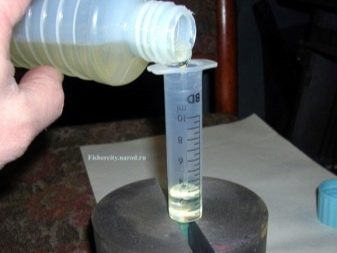

How to dilute?
The prepared epoxy glue remains liquid for a very short time. It can vary from 15 minutes to half an hour (depending on the manufacturer), and then quickly thickens and hardens. Sometimes this time is not enough to get the job done. To prolong the working time with the adhesive, it can be thinned with acetone. You won't need a lot of it - you need to take one part of it in relation to the amount of resin and stir gently.

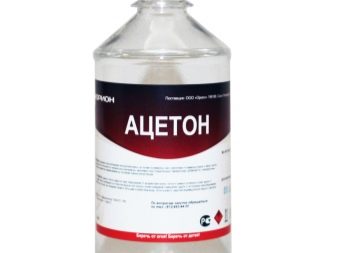
How to make it more liquid?
For some surfaces, the use of a viscous adhesive is not always convenient. Sometimes a liquid compound is needed to saturate the materials. The epoxy can be made more fluid to make the epoxy more flexible and pliable to application.
There are two ways to do this.
- Heating retains the properties of the glue, but shortens the working time with it. In addition, you can inadvertently exceed the heating temperature, then the glue will be damaged. In this case, it is advisable, if possible, to heat the surfaces to be glued. Advantages will be to preserve the life of the adhesive and to make it easier to apply.
- Add solvent. To obtain a more liquid composition, it can be mixed not only with acetone, but also with varnish solvents, denatured alcohol. By extending the life of the epoxy, they can change its color and damage the surface. And also resin shrinkage and a decrease in its strength may occur.

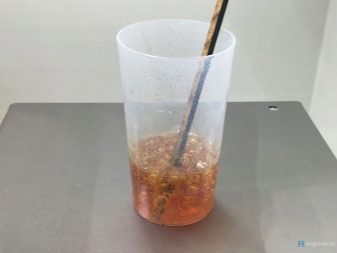
How to achieve a transparent color?
Sometimes the color of the adhesive is important. In some cases, a transparent compound is needed to hide traces of repairs, such as jewelry. Such a composition may be needed when creating decor items. Modern industry offers a wide range of epoxies and dyes to them.With their help, you can achieve different colors, their shades and effects: any one-color, matte, fluorescent, pearlescent, with sparkles.
It is not difficult to prepare them: you need to add 5-6% of the paint in relation to the amount of resin in the composition. The same agents will make the resin transparent if dissolved up to 0.05% of the agent. As improvised means, you can use ballpoint or gel pen ink, alkyd paints. The transparency is influenced by air bubbles, so you should gently stir the composition. You can put it in a water bath, as the heating will help the bubbles come out.
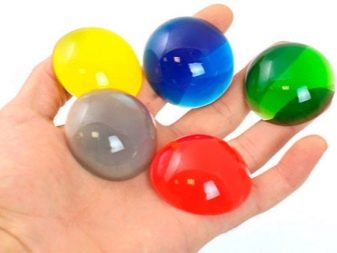
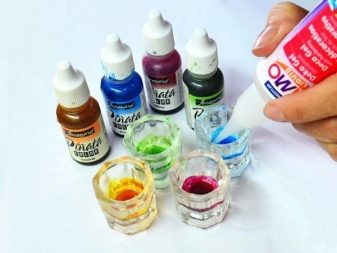
How to dilute epoxy with hardener
It is necessary to dilute the mixture especially carefully, observing the correct proportions. If you overdo it with a hardener or add too little, you get an insufficiently high-quality composition, which will quickly lose its properties.
If you add a lot of hardener, the resulting substance will be resistant to high temperatures, but the strength will decrease. Excess floats to the surface, which spoils the composition. If you use too little hardener, the mixture will be thin and viscous.
To get the correct composition, you must mix everything in the proportions indicated on the package. Correctly, one part of hardener requires two parts of resin. This will make it possible to obtain a substance with the required characteristics.
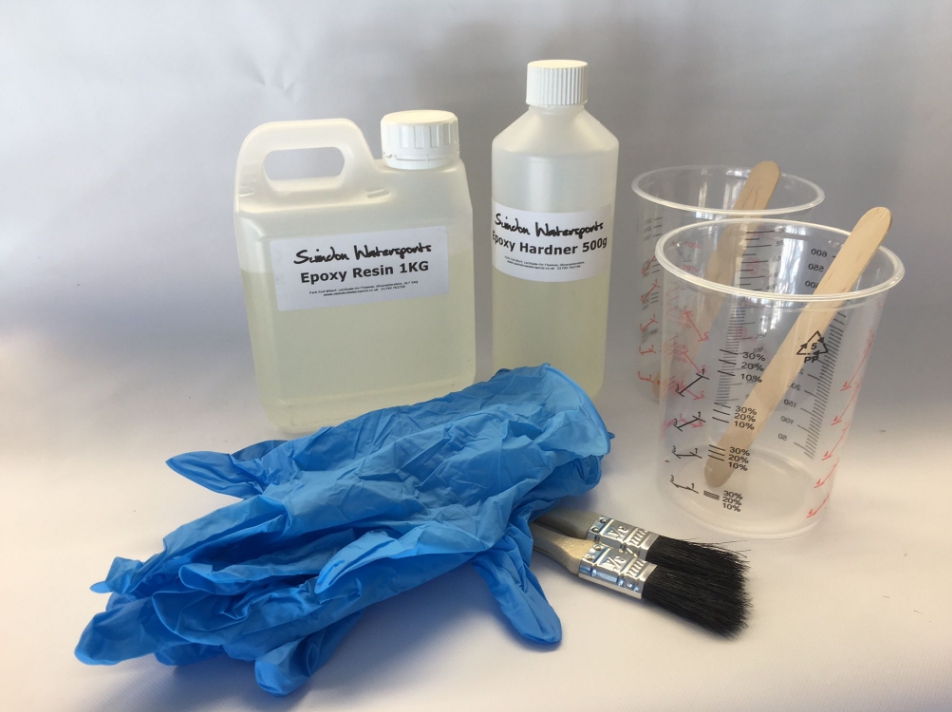 It is necessary to dilute the mixture especially carefully, observing the correct proportions.
It is necessary to dilute the mixture especially carefully, observing the correct proportions.
The cure rate is also influenced by the type of surface structure and the working temperature of the substance. When the temperature rises, it will be possible to speed up the reaction. There are substances that have high quality indicators when the temperature is lowered or raised.
One important question for newbies is how much epoxy to use. This parameter is influenced by a number of factors:
- Surface roughness;
- The tendency to absorb various substances;
- Size and number of pores.
When preparing a mixture, it is important to calculate the flow rate per square meter. It all depends on the type of area to be treated.
 The cure rate is also influenced by the type of surface structure and the working temperature of the substance.
The cure rate is also influenced by the type of surface structure and the working temperature of the substance.
Required tools
Before starting work, you need to collect all the necessary components to complete the task. You will need:
- Containers for mixing ingredients - any sufficiently deep container will do;
- Syringe - It is advisable to prepare two for resin and hardener;
- A stick for stirring mixtures - it is advisable to use a dielectric (eg wood).
After preparing all the tools, you can start the workflow. The components of the mortar are mixed in the prescribed quantities to prepare the correct mixture.
 Before starting work, you need to collect all the necessary components to complete the task.
Before starting work, you need to collect all the necessary components to complete the task.
Formulation proportions and pot life
To prepare a ready-made composition, it is necessary to mix the components in the prescribed proportions. The quantity of each ingredient is indicated on the package. Typically, the ratio is 1 to 10 for hardener and resin, respectively.
If it is difficult to find a suitable solution, you can heat the mixture. If the substance solidifies when it cools, everything is mixed correctly. If the composition remains liquid, a hardener must be added. The epoxy will retain its qualities for an hour.
 To prepare a ready-made composition, it is necessary to mix the components in the prescribed proportions.
To prepare a ready-made composition, it is necessary to mix the components in the prescribed proportions.
How long will the polyester resin dry
The type of curing process (cold or hot) has little effect on the curing time. This is done by default as follows:
- Gelatinization occurs in 40-120 minutes, after adding all the elements.
- The rubbery stage occurs in about 2-12 hours.
- Solid stage one. It is characterized by the fact that pressing on the object does not lead to the appearance of traces, but the process of the release of volatile substances is still ongoing, 14-24 hours.
- Solid stage two. When the components are completely frozen and will no longer change, it takes 15 to 25 days.
It is possible to bring the polyester to the final stage by using exposure to high temperatures. For this, heat chambers or special heating devices are used to create a room temperature of 80-100 degrees, for at least two hours. When it is necessary to dry an object made of fiberglass with polyester resin, then this "drying" should take 6 hours. Then complete drying will occur in 6-7 days.
You can track the process transitions by observing the change in product shades. You can find out what colors should be at certain stages in the same material instructions.
 It is possible to bring the polyester to the final stage by using exposure to high temperatures.
It is possible to bring the polyester to the final stage by using exposure to high temperatures.
What and how to breed?
You can make a ready-made epoxy composition with your own hands at home if you properly dilute the resin with a hardener. The mixing ratio is usually 10 parts resin to 1 part hardener. This ratio may be different, depending on the type of epoxy composition. For example, there are formulations where it is necessary to mix 5 parts of polymer resin and 1 part of hardener. Before preparing a working polymer composition, it is necessary to calculate the amount of epoxy resin that is needed to complete a particular task. The calculation of the resin consumption can be made on the assumption that for pouring 1 m² of area per 1 mm layer thickness, 1.1 liters of the ready-made mixture will be required. Accordingly, if you need to pour a layer equal to 10 mm on the same area, you will have to dilute the resin with a hardener to get 11 liters of the finished composition.
Hardener for epoxy resin - PEPA or TETA, is a chemical catalyst for the polymerization process. The introduction of this component into the composition of the epoxy resin mixture in the required amount provides the finished product with strength and durability, and also affects the transparency of the material.
The resin can be prepared in varying amounts of volume.
- Small volume cooking. The epoxy resin components are cold mixed at room temperature not exceeding + 25 ° C. It is not recommended to mix all the required amount of material at once. To begin with, you can try to make a test batch and see how it will solidify and what features it has. When mixing a small amount of epoxy resin and hardener, heat will be generated, so you need to prepare special dishes for working with the polymer, as well as a place where this container with hot contents can be placed. Mix the polymer components slowly and carefully so that there are no air bubbles in the mixture. The finished resin composition must be homogeneous, viscous and plastic, with an absolute degree of transparency.
- Large volume cooking. The more ingredients are involved in the mixing process by volume, the more heat is generated by the polymer resin composition. For this reason, large quantities of epoxy are prepared using the hot method. For this, the resin is heated in a water bath to a temperature of + 50 ° C. As a result, such a measure allows better mixing of the resin with the hardener and extending its working life before hardening by about 1.5–2 hours. If, when heated, the temperature rises to + 60 ° C, then the polymerization process will accelerate. In addition, it is necessary to ensure that no water gets into the epoxy when heated, which will spoil the polymer so that it loses its adhesive properties and becomes cloudy.
If, as a result of work, it is necessary to obtain a strong and plastic material, then before the introduction of the hardener, a DBF or DEG-1 plasticizer is added to the epoxy resin. Its amount to the total volume of the resin ingredient should not exceed 10%. The plasticizer will increase the resistance of the finished product to vibration and mechanical damage. In 5-10 minutes after the introduction of the plasticizer, the hardener is added to the epoxy resin.


